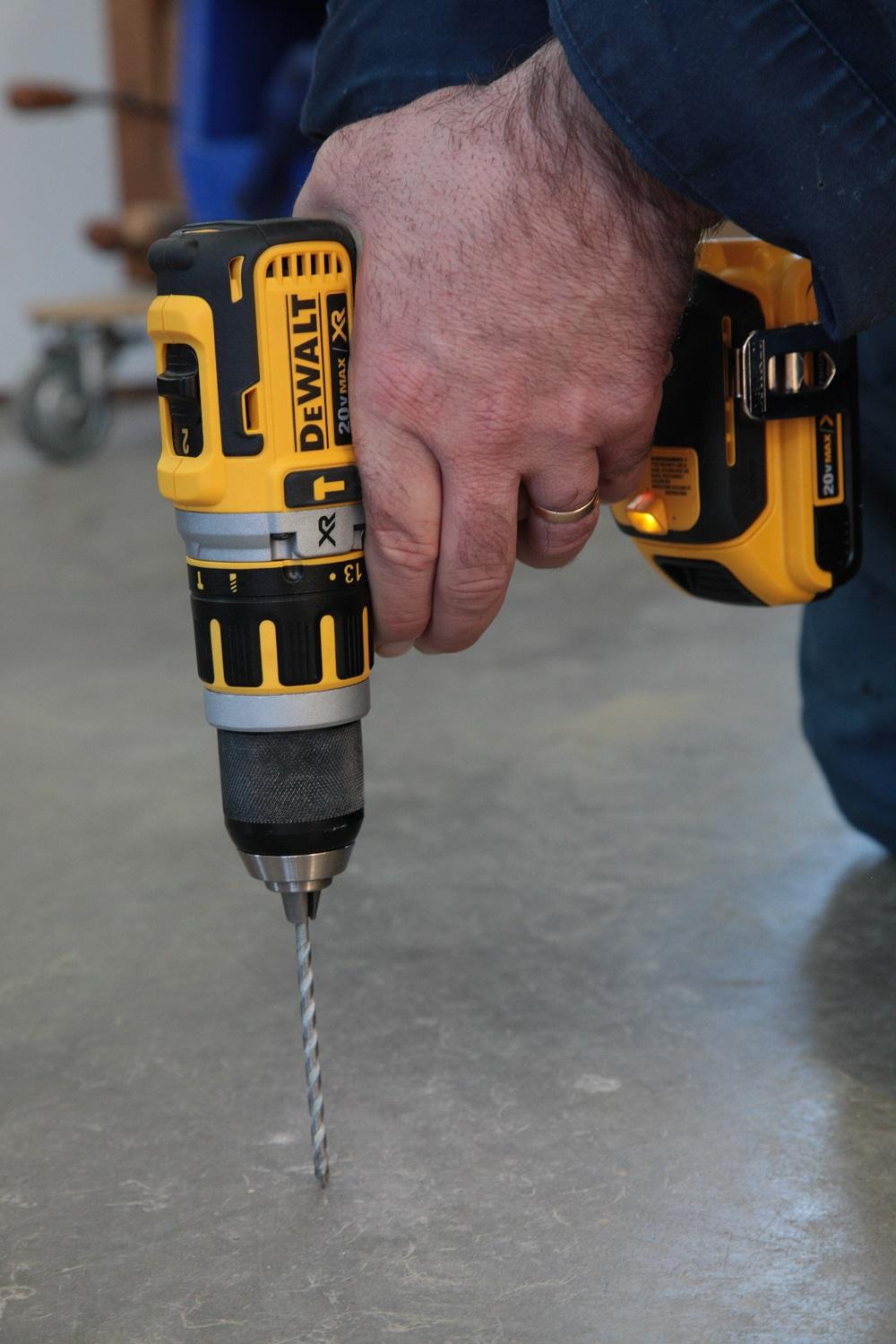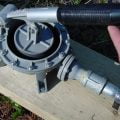An old-timer who lived next door to me years ago always said that the most important power tool in his book was an electric drill. I agree with him. This is especially true today because drills — especially cordless drills — have become exceptionally good. I’ve been using drills of all kinds for more than 40 years, and my best real-world advice for choosing the correct model and features for general-purpose drilling is what you’ll get here.

Voltage
The typical voltage for a cordless drill varies from 12 volts to 18, 20 and beyond. When it comes to choosing a general-purpose drill, 18 or 20 volts is ideal. There’s no difference between these voltages in practice — it’s just marketing. DeWalt, for instance, lists the no-load voltage output of a battery pack, but other brands use the voltage under the working load. As you can see in the photo above, the so-called 18-volt battery pack actually delivers 20-plus volts at rest when fully charged; 20-volt batteries give about 18 volts under load.

Quality
As a non-professional, you might be tempted to buy the cheapest cordless drill around. That would be a mistake. Just because you can find an 18-volt drill for $50 doesn’t mean you should buy it. Tools like these actually end up being some of the most expensive you can buy, because they won’t work well, nor for long. At the other end of the spectrum, you don’t need to spend $400 on the best cordless drill in the world, either. The sweet spot for cordless drill pricing for DIYers is around $100 to $150. For this price, you’ll get a very good drill with a decent battery and charger. If you’re patient, you’ll find drills going on sale with an extra battery or another cordless tool thrown in. Patience is rewarded if you take the time to shop carefully.

Features
This really comes down to choosing between one of two types of drills. So-called “drill drivers” have forward and reverse settings, at least two different speed settings, and a clutch that makes it easier to drive screws to a consistent depth. Another type of cordless drill is called a “hammer drill.” Most hammer drills have all the same features of a drill driver, plus one more that greatly speeds up the boring of holes in masonry such as brick, block, concrete or stone. That hammer feature can be switched on or off and imparts a high-frequency hammering action to the drill bit. This greatly increases drilling speed in masonry, perhaps four or five times faster than a drill that rotates. You’ll pay more for a hammer drill than you will for an ordinary drill driver, but there’s no question that it’s worth it if you expect to bore holes in masonry, even small holes and even occasionally.
Spend more than the minimum; take the trouble to store your drill, batteries, chargers and accessories in a dedicated toolbox, and you’ll be one step closer to the confident, capable, self-reliance that a well-kept tool offers.
******************

Do You Hate Cordless?
Chances are good that if you had prior experience with cordless tools years ago, you might prefer corded tools today. Back when all cordless tools used nickel-cadmium (nicad) batteries, the entire cordless category could be pretty disappointing. That’s because nicad batteries had the nasty habit of failing after a short time. They also self-discharge in storage, meaning that an old-school cordless tool would be dead when you went to use it after a month or two of storage. Not to mention the fact that nicad batteries can be ruined by a whole range of small sins. Use them too hot, use them too cold, use them too much or use them too little, nicads needed little excuses to cause grief. In 2005, nicads began to make way for cordless tools that use lithium-ion batteries, and this has made all the difference. Fast-forward to today, and li-ion batteries are now much better than even the best li-ion of 10 or 15 years ago, boasting long run times between charges, a lower voltage drop under load, cold and heat tolerance, and battery warranties extending to 3 years (and even a lifetime warranty from one tool manufacturer). Don’t let the bad experiences of the past prevent you from enjoying the benefits offered by the modern cordless tools of today.
Steve Maxwell and his wife Mary live on a 90-acre modern homestead on Manitoulin Island, Ontario in a stone house they built with local materials beginning in 1985. Steve is Canada’s longest-running home improvement and how-to columnist and editor of Home and Property. He divides his time working on the land, building things large and small, and creating articles and how-to videos that teach sustainable, self-reliant, hands-on living skills.













